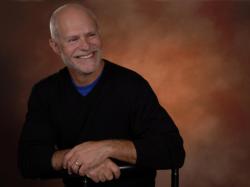 This week’s interview is with Kent Blumenthal, the Executive Director of the National Intramural-Recreational Sports Association (NIRSA) in Corvallis, Oregon. Continue reading to learn more about how NIRSA is promoting sustainability, and the advice Kent has for other campus sustainability professionals.
This week’s interview is with Kent Blumenthal, the Executive Director of the National Intramural-Recreational Sports Association (NIRSA) in Corvallis, Oregon. Continue reading to learn more about how NIRSA is promoting sustainability, and the advice Kent has for other campus sustainability professionals.
What campus sustainability initiatives are you working on at the moment?
NIRSA is currently garnering member support for the ACUPCC (American College and University Presidents’ Climate Commitment), and is partnering with faculty of the National School of Recreational Sports Management to better incorporate sustainability into the School’s curriculum. NIRSA is also exploring how to become a Sustainability Tracking, Assessment & Rating System (STARS) partner organization. To that end, NIRSA will also soon launch a special committee to work with the STARS program to include collegiate recreational sports facilities, playing fields, arenas, and stadia as potential credit criteria.
Other initiatives include developing a sustainability section of the NIRSA website, and having NIRSA’s Sustainability Committee Chair serve on the inaugural HEASC committee for the 2011 Campus Sustainability Day.
What resources and training do you offer your members specifically on sustainability issues?
NIRSA offers a variety of sustainability-related educational sessions at the NIRSA Annual Conference & Recreational sports Exposition, as well as periodic webinars on sustainability-related topics. The most recent webinar was entitled, ”Choices with Purpose-How your Purchase can Positively Impact Sustainability,” led by Alex Accetta (Portland State University). Our new professional networking site, Habitat, offers members information exchange about campus sustainability and other issues. Our monthly electronic newsletter, NIRSA KNOW, includes a regular section on sustainability, which our Sustainability Committee Chair uses to communicate important information and updates on sustainability issues and initiatives to the NIRSA community.
How does being part of the HEASC network provide opportunities for learning and collaboration?Being a part of the HEASC network offers NIRSA many advantages concerning campus sustainability that would be more difficult to realize on its own. The HEASC network allows for:
- Sharing of practical programs and new ideas among participating groups that are transferable from one association to another;
- Opportunities to collaborate on special projects, including education and training;
- Updates about federal legislative and regulatory issues affecting higher education; and
- Information on public and private funding programs for higher education sustainability initiatives.
What types of sustainability Professional Development do you offer your members?
As previously mentioned, NIRSA offers a variety of sustainability-related educational sessions at our NIRSA Annual Conference & Recreational Sports Exposition, as well as providing periodic webinars on sustainability-related topics. The new Registry of Collegiate Recreational Sports Professionals includes sustainability within its eight core competencies. Registered professionals must pursue continuing education within the eight core competency areas to remain on the Registry.
How did you get started in campus sustainability, and what campus sustainability success are you most proud of?
NIRSA joined the Higher Education Association’s Sustainability Consortium (HEASC) in its second year of operation. The contacts and collaboration that emanated from HEASC jump-started NIRSA’s involvement in campus sustainability. I’m most proud of convening a NIRSA Knowledge Community on Sustainability shortly after NIRSA joined HEASC, which was quickly followed by a webinar on ‘Sustainability and Campus Recreation,’ presented by Dr. Deb Rowe (Oakland Community College, MI) and the establishment of a monthly ‘Sustainability’ column in the online member newsletter, NIRSA KNOW.
In what area(s) do you see the biggest room for growth in the campus sustainability field?
I believe that new ideas and practical applications will continue to proliferate in the campus sustainability field, especially within collegiate recreational sports. According to Dr. Susan Komives, President of the Council of Standards in Higher Education (CAS), collegiate recreational sports reaches more college students on a regular basis than any other campus activity. Likewise, campus recreation offers a tremendous opportunity to positively influence sustainable practices.
How are you incorporating the social dimensions of sustainability into your work?
Employees at the NIRSA National Center in Corvallis, Oregon recycle paper, glass, plastics and other products, and purchase recycled or partially recycled paper products. An in-house staff committee reviews and recommends internal sustainable practices.
NIRSA offers members a chance to participate in a community service project during the NIRSA Annual Conference & Recreational Sports Exposition. More than 200 attendees paid $20 each to volunteer at the 2011 NIRSA Annual Conference in New Orleans, Louisiana and participate in the improvement of trails at City Park, the nation’s second largest urban park that was severely damaged by Hurricane Katrina.
We also engage in sustainable procurement practices, by certifying that sports equipment used in NIRSA’s National Campus Championship Series (NCCS) is developed using fair trade practices.
Is there a particular insight (learning experience or “ah-ha” moment) you have had working on campus sustainability?
It has become commonplace for collegiate recreational sports departments to find new and different ways to accomplish their organizational missions and objectives that directly or indirectly provide a sustainable program element. These new ways of doing business, implemented by NIRSA member institutions, raise-the-bar for sustainability in collegiate recreational sports. Examples include:
- Bike share program (Washington State University)
- Returning electricity to the power grid from exercise equipment (Oregon State University)
- Solar panels within campus recreational sports center that supplements heating (University of Oregon)
How do you spend your free time?
I enjoy regular exercise (weight training & cardio workouts), reading (mostly American history), gardening, camping, fly fishing, and spending time with my family and 13-1/2 year old yellow lab, Nugget.